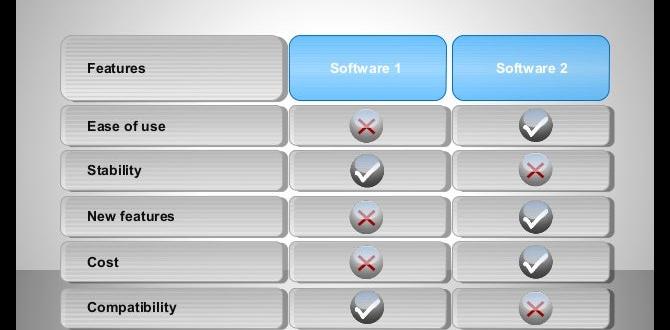Refresh rate is an important factor to consider when purchasing a new display, whether it be for gaming, watching videos, or simply browsing the web. The two most common refresh rates available today are 60Hz and 120Hz. In this article, we will compare these two refresh rates, discuss their definitions, analyze their pros and cons, evaluate image quality and gaming performance, consider compatibility and cost differences, and provide guidance on choosing the right refresh rate for your needs.
The Definition of 60Hz and 120Hz
60Hz and 120Hz refer to the number of times the display refreshes or updates its image per second. A 60Hz display refreshes the image 60 times in one second, while a 120Hz display refreshes the image 120 times in one second. A higher refresh rate allows for smoother motion and a more fluid visual experience.
What is 60Hz?
60Hz is the standard refresh rate for many displays, including computer monitors, televisions, and most mobile devices. It means that the image is refreshed 60 times in one second. This refresh rate is considered adequate for most daily tasks and offers a satisfactory visual experience.
What is 120Hz?
120Hz is a higher refresh rate compared to 60Hz. It means that the image is refreshed 120 times in one second, resulting in a smoother and more fluid display. This refresh rate is especially beneficial for fast-paced activities such as gaming and watching high-action videos.
Refresh Rates Comparison
Now, let’s compare the refresh rates of 60Hz and 120Hz to understand their differences and benefits for various applications:
Pros and Cons of 60Hz
Pros:
- Standard and widely available refresh rate
- Compatible with most devices
- More affordable compared to higher refresh rates
Cons:
- May result in motion blur during fast-paced activities
- Not ideal for gaming or watching high-action content
Pros and Cons of 120Hz
Pros:
- Offers smoother motion and reduces motion blur
- Enhances gaming performance and visual experience
- Allows for a more immersive experience in high-action content
Cons:
- Higher cost compared to 60Hz displays
- May not be fully compatible with older devices
Visual Experience Comparison

One significant factor impacted by refresh rate is the overall visual experience. Here, we will compare the image quality of 60Hz and 120Hz displays:
Image Quality of 60Hz
A 60Hz display provides decent image quality for general use. However, due to its lower refresh rate, it may result in motion blur during fast movements, especially in gaming or while watching high-action videos. The image may not appear as smooth or fluid compared to a higher refresh rate display.
Image Quality of 120Hz
With a 120Hz display, the image quality is noticeably improved. The higher refresh rate reduces motion blur, providing a smoother and more fluid visual experience even during fast movements. This is particularly advantageous for gaming enthusiasts and those who enjoy watching action-packed movies or sports.
Gaming Experience Comparison

For gamers, refresh rate is a critical factor that can significantly impact their gaming experience. Let’s compare the gaming performance of 60Hz and 120Hz displays:
Gaming Performance on 60Hz
Playing games on a 60Hz display is still enjoyable, but it may not provide the smoothest experience, especially in fast-paced games that require quick reflexes. The lower refresh rate can introduce motion blur and make it harder to track fast-moving objects, potentially affecting gameplay performance.
Gaming Performance on 120Hz
A 120Hz display enhances gaming performance by providing a smoother and more responsive gaming experience. The higher refresh rate reduces motion blur and input lag, resulting in improved clarity and better tracking of fast-moving objects. This can give gamers a competitive edge and a more immersive gaming experience.
Compatibility and Cost Comparison

When deciding between a 60Hz and 120Hz display, it’s important to consider compatibility with devices and potential cost differences:
Compatibility with Devices for 60Hz
A 60Hz display is widely compatible with most devices, including computers, gaming consoles, and streaming devices. It is the standard refresh rate for many devices and can be easily connected without any compatibility issues.
Compatibility with Devices for 120Hz
A 120Hz display may not be fully compatible with older devices. Some older devices may not support or take full advantage of the higher refresh rate. It is recommended to check the compatibility of your devices before investing in a 120Hz display.
Cost Differences between 60Hz and 120Hz
120Hz displays are generally more expensive compared to 60Hz displays. The higher refresh rate technology and additional features inherent in a 120Hz display contribute to the increased price. It’s essential to consider your budget and the value you place on a higher refresh rate when deciding which display to purchase.
Decision Factors

When choosing between a 60Hz and 120Hz display, consider the following factors:
Choosing the Right Refresh Rate for Your Needs
1. Usage: Determine the primary purpose of your display. If you mainly use your device for general tasks like web browsing and office work, a 60Hz display may suffice. If you are a gamer or watch a lot of high-action content, a 120Hz display is recommended.
2. Budget: Consider your budget and the price range you are willing to invest in a display. Keep in mind that 120Hz displays are generally more expensive than 60Hz displays.
3. Device Compatibility: Check the compatibility of your devices with the desired refresh rate. Ensure that the devices you plan to connect to the display can support and take advantage of the chosen refresh rate.
Conclusion
In summary, the choice between a 60Hz and 120Hz display depends on your needs and preferences. While 60Hz is adequate for most daily tasks, a higher refresh rate like 120Hz provides smoother motion, enhances gaming performance, and delivers a more immersive visual experience. Consider factors such as image quality, gaming performance, compatibility, and budget to make an informed decision that meets your requirements.
FAQs:
Q: Which refresh rate is better, 60Hz or 120Hz?
A: Both refresh rates have their advantages. A 60Hz display is suitable for general use and offers a satisfactory visual experience. However, if you are a gamer or frequently watch high-action content, a 120Hz display provides smoother motion and enhances gaming performance.
Q: Can I upgrade my 60Hz display to a 120Hz display?
A: Upgrading to a 120Hz display may require purchasing a new monitor or TV. Consult the specifications of your current display to determine if it can be upgraded to a higher refresh rate. Additionally, ensure that your computer or other devices are compatible with the desired refresh rate.
Q: Are all games compatible with a 120Hz display?
A: Most modern games are compatible with a 120Hz display. However, some older games may not support the higher refresh rate. Check the system requirements or consult the game developer’s website to determine if a specific game supports 120Hz.
Q: What is the difference between 60Hz and 144Hz?
A: The primary difference between 60Hz and 144Hz is the refresh rate. A 144Hz display refreshes the image 144 times per second, offering an even smoother visual experience compared to a 60Hz display. A 144Hz display is especially beneficial for hardcore gamers and enthusiasts who demand the highest level of performance.
Q: Can I notice a difference between 60Hz and 120Hz?
A: Yes, the difference between 60Hz and 120Hz is noticeable, especially during fast movements or when playing high-action games. A 120Hz display provides a smoother image with reduced motion blur, resulting in a more visually appealing experience.